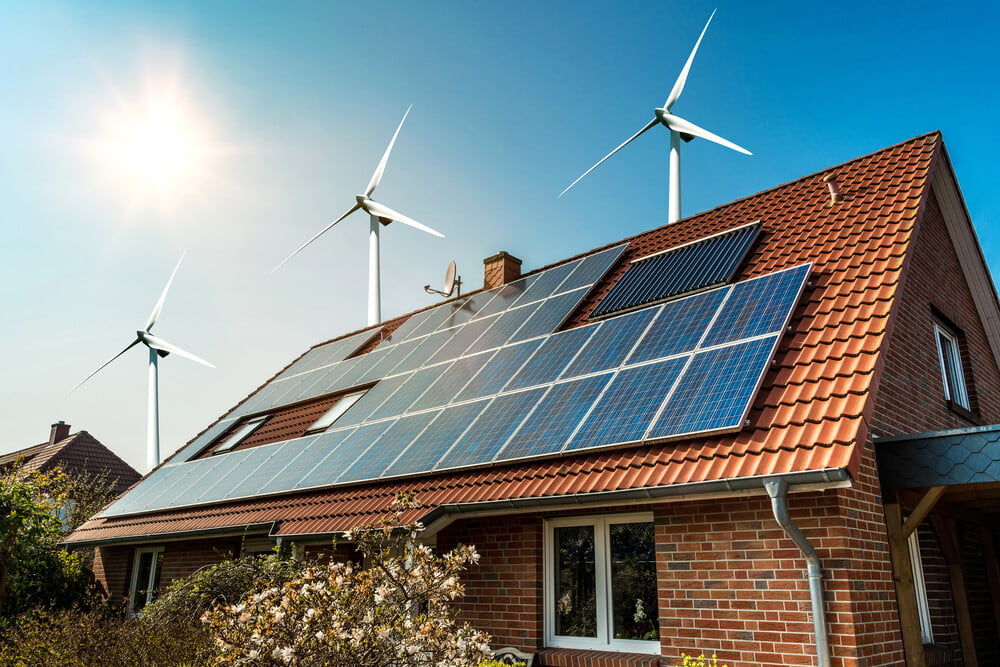

Sustainability
A Walk Through the Sustainable Home of Tomorrow
The way we live our lives is changing. Technology has become so advanced, and the world’s expectations have changed. We now need our homes to be an extension of us. The smart home is a highly sought-after concept, and it’s growing in popularity with each passing year. From energy management and automated doors to remote control lights and more, living in your smart home is becoming more convenient than ever before.
Your home won’t be just a house; it will be your domain, where you can go about your day without having to worry about things like cooking or cleaning. Here are some aspects of the smart home you should know about that might change your definition of what a “home” really means for you.
What is a smart home?
A smart home is a residential dwelling where the occupant can remotely control appliances and devices via smartphones or computers. The term “smart” is typically used to describe how these devices can connect remotely with each other, as well as with a user. Fully-networked sensors allow for automated tasks such as turning the lights on when someone enters the room or controlling temperature settings on any given device.
However, smart homes go beyond the array of gadgets and gizmos scattered across the house. Everything from interior decoration to landscaping and maintenance goes into the successful implementation of smart home systems. Let’s take a closer look at the benefits and expectations of smart home living:
The benefits of having a smart home
The benefits of having a smart home are endless. You’ll be able to take control of your home and make it a place you enjoy living in. With the ability to adjust energy usage and remotely access your home from anywhere, you’ll never have to worry about coming home to an empty fridge or missing out on time with family members.
Additionally, you’ll be able to get alerts when someone is trying to break into your house or when there’s a fire in your neighborhood without having to leave the comfort of your bed. This type of extra protection will keep you safe and sound while you sleep.
What can you expect from a smart home?
A smart home is no longer just about the large screen television in your living room. It’s been adapted to meet your needs and make your life easier. With some simple changes, you can now have an intelligent home customized to perform all of the critical tasks for you.
Of course, some smart home features will require more time and effort than others. But at the end of the day, a smart home is one with new technology that has been redesigned to fit your lifestyle.
So, if you feel like your home is too small or not equipped with enough technology, think again and consider what it would take to get your house on the fast track to becoming a smart home.
The major components of your smart home
The smart home is not only about convenience but also about automation. Automated lights and doors are a significant component of the smart home. With these features, you can control your lighting from anywhere in the world by using your phone or tablet. You don’t have to worry about looking for your keys or forgetting where you put them.
Other smart home components include security systems, heating, cooling management, tech automation, and even medical monitoring. These features allow you to live a healthier life with less effort on your end.
Smart homes aren’t just for people who want to save time; they can also help people deal with various situations throughout their day, including power outages, construction zones, and more. The latest innovations in technology offer an array of options and services that people could potentially use in their homes to live happier and healthier lives.
Conclusion
We live in a digital age, and the demand for faster, better, smarter technology is not slowing down. With the popularity of smart home systems, the demand is only picking up.
A smart home can do a lot for you and your family, but it doesn’t have to be complicated. There are three major components of your smart home: control, automation, and connectivity. And as you can see, you only need one to have a smart home and get started with these benefits.


 Environment10 months ago
Environment10 months agoAre Polymer Banknotes: an Eco-Friendly Trend or a Groundswell?

 Environment11 months ago
Environment11 months agoEco-Friendly Home Improvements: Top 7 Upgrades for 2025

 Features9 months ago
Features9 months agoEco-Friendly Cryptocurrencies: Sustainable Investment Choices

 Features10 months ago
Features10 months agoEco-Friendly Crypto Traders Must Find the Right Exchange

















